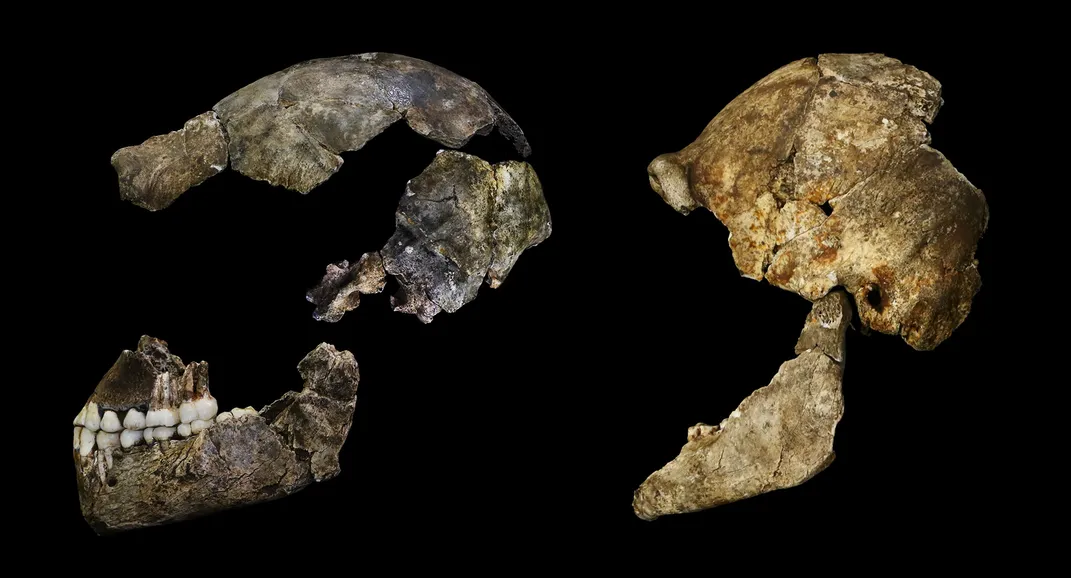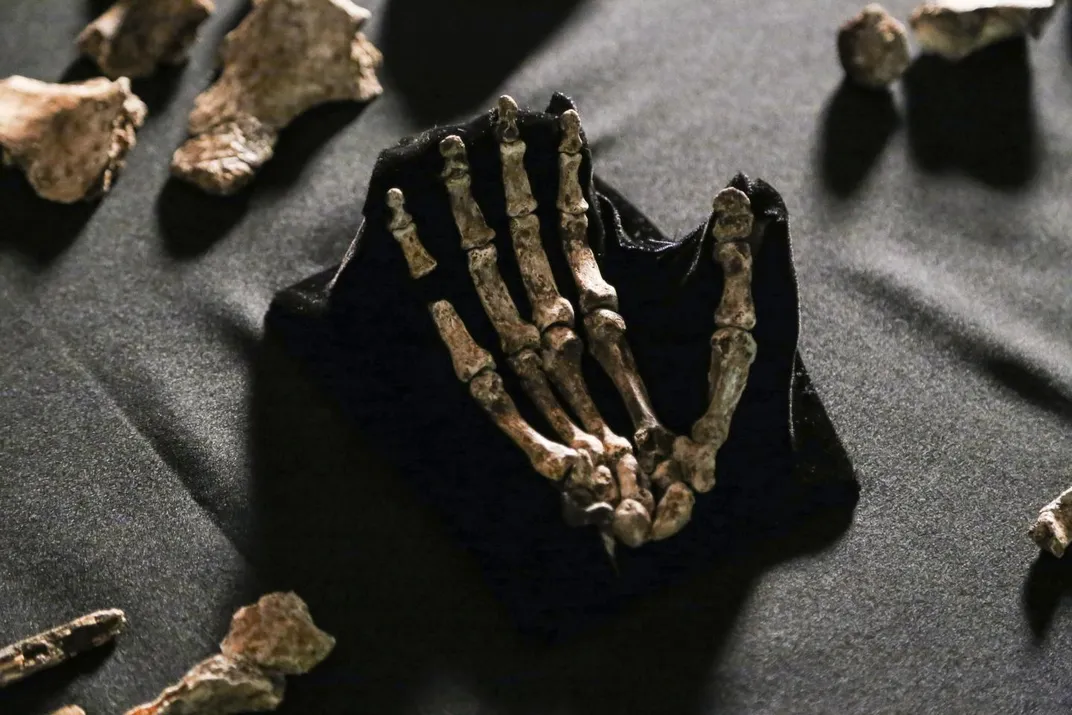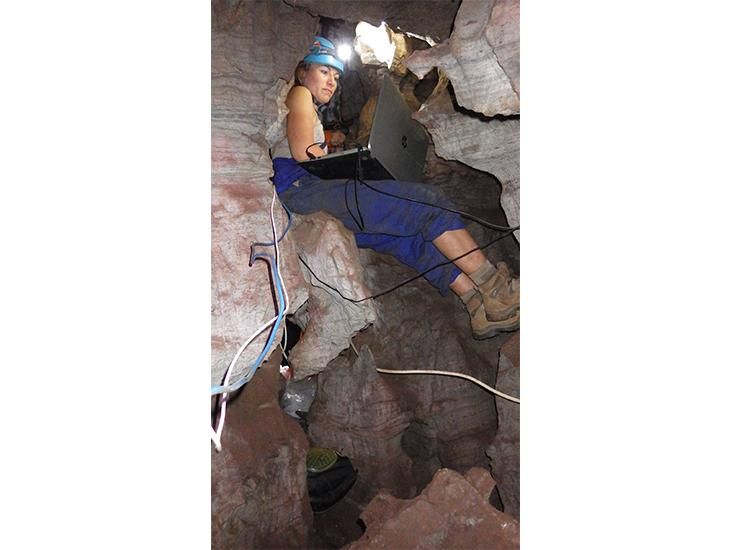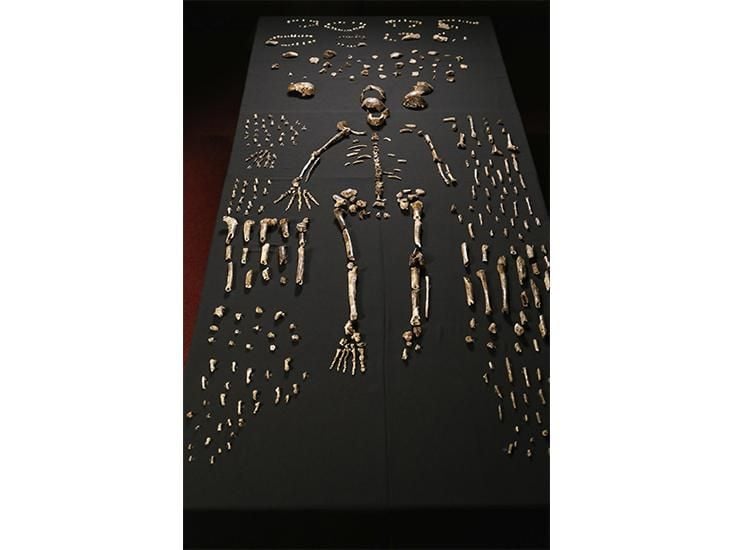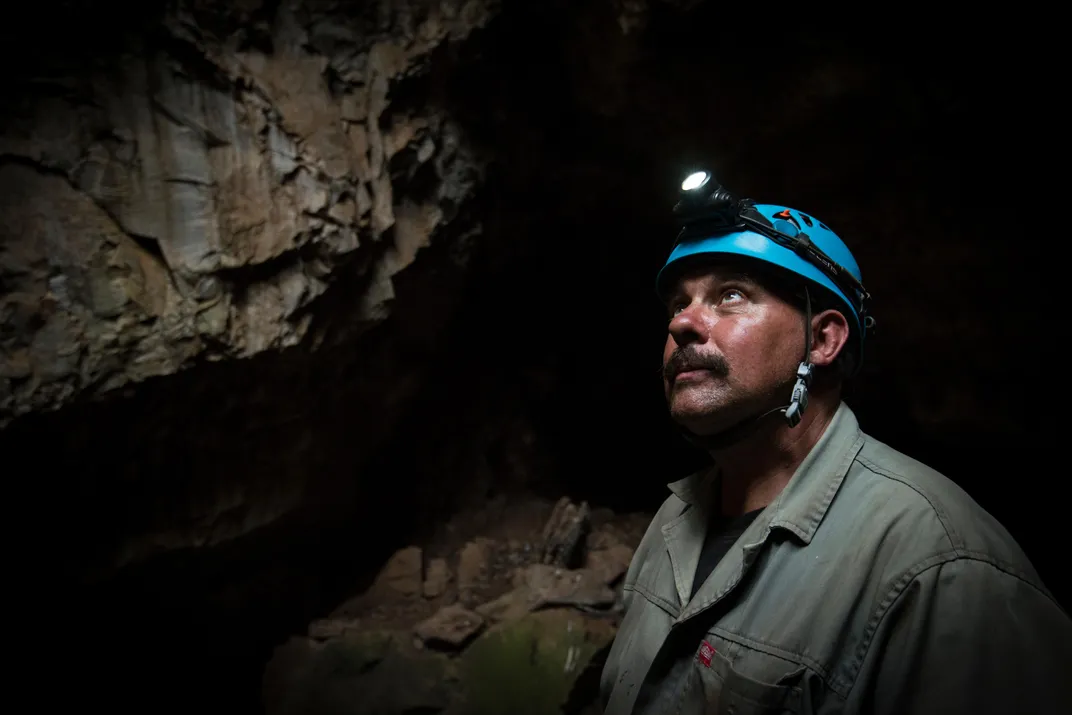What Makes a Fossil a Member of the Human Family Tree?
The surprising new species Homo naledi raises more questions than answers—for now
/https://tf-cmsv2-smithsonianmag-media.s3.amazonaws.com/filer/92/78/927887f8-924e-4fbc-a652-62942d9e4f62/hnaledi-skull.jpg)
Every family has its oddball aunt or uncle, and our ancient human relations are no exception. The latest branch on the human family tree goes to Homo naledi, a species with a surprising—and somewhat contentious—mix of primitive and modern features.
The discovery is unusual because it marks the greatest concentration of ancient human remains found in a single site—a whopping 1,550 bones from about 15 individuals. What's more, the hominids seem to have deliberately placed their dead deep in a South African cave, a behavior that paleontologists say is oddly advanced considering the species' small brain size.
Announcing the find on September 10, paleoanthropologist Lee Berger of the University of the Witwatersrand argued that the fossils represent a previously unknown member of the human genus, one that seems to be in the transition zone between Homo and the next closest relative, Australopithecus. But other human origins experts are not ready to re-write the textbooks just yet. For instance, H. naledi shares a lot of features with Homo erectus, another early human species found in the same region.
So while the H. naledi fossils undeniably add to the story of human evolution, they also highlight the difficulties of defining exactly what makes a fossil species human in the first place.
According to the fossil record, the genus Australopithecus includes the predecessors to our own Homo genus, such as the famed "Lucy" fossil, a female A. afarensis, found in 1974 in Ethiopia. Members of this genus walked upright regularly but frequently spent time in the trees to feed or avoid predators. Their brain size was equivalent to that of chimpanzees and gorillas.
The most generally accepted evolutionary timelines say these ancient hominids gave way to the genus Homo beginning some 2.8 million years ago. Homo sapiens, or modern humans, are one of seven known members of the genus—eight now that H. naledi has been described. Some of these species are our direct ancestors, while others lived and died on more distant branches of the family tree.
As Berger and his colleagues write in the journal eLife, an adult H. naledi would have been about 5 feet tall and would have weighed just 100 pounds, with a brain about the size of an orange. The remains present a complex mix of the characteristics scientists use to differentiate members of the genus Homo from earlier relatives—things like tooth and cranial shape, bipedal walking, arboreal living and brain size.
“In terms of a combination of human and more primitive features, the volume of evidence from 15 individual skeletons is so compellingly different from anything that we've seen in other bipedal, upright human-like fossils that I'm completely convinced that it's a new species and part of our human evolutionary tree,” says Rick Potts, director of the Smithsonian's Human Origins Program.
For instance, H. naledi's teeth and skull are similar to early members of our genus, like Homo habilis. Its feet are also much like those of later humans, as are aspects of its hands.
“But it also has these long, curved fingers that indicate tree living behavior more than anything that we see in Australopithecus even,” Potts says. The fossils' raised shoulders and rib cage are also more like those seen among the Australopithecus group.
However, New York University anthropologist Susan Anton notes that there's no consensus in paleoanthropology about exactly how such comparisons are used to define the genus Homo. Some would argue that striding bipedalism is a defining feature, so that being Homo means using a specific way of moving around the environment. Other scholars may look more to cranial characteristics as Homo family features.
“It's a little more complicated than this of course,” she adds of cranial comparisons, “but the simple line is brain size increases, jaw and tooth size decrease and that combination is what gives you Homo as opposed to Australopithecus.”
Which characteristics take precedence depends to some extent on the different philosophies of publishing scientists, says Anton. “The problem with this [H. naledi] find is that it seems to show both primitive and more Homo-like characteristics,” she notes. “And in that I think it highlights that we really need a conversation about what we mean by Homo and how we decide which of the different characteristics we are going to give precedence to.”
Complicating matters is the fact that Berger and his team have not yet dated the bones, so we don't know where H. naledi belongs on the evolutionary timeline.
“What's important to an evolutionist are the species lineages … when do they arise by branching, and when do they terminate by extinction?” says Tim White of the University of California, Berkeley.
Based on anatomical clues, it's possible H. naledi lived about 2.5 million years ago, just before H. erectus came on the scene. However, the strange new species could also be less than a million years old, which means it may have shared the landscape with a handful of other human species, including a few evolutionary dead-ends as well as the earliest members of Homo sapiens.
“It has a combination of Australopithecus and Homo-like traits, so Berger and his team are guessing that it's related to the transition between those two groups, which was a time when different populations lived under varying survival pressures that led to very different evolutionary experiments and different combinations of Australopithecus and Homo traits in different areas across Africa,” Potts says.
“But it's hard to know without a date whether it's from that period, as one of those experiments that then went nowhere, or whether it's in fact much less than one million years old. In that case, we could be talking about something that also didn't go anywhere and was just an isolated, probably very small population that persisted for a long time in splendid isolation.”
“We're talking about the origins of Homo because of the presumed age for this thing, but I have no idea how old this thing is,” Anton says. “It's not clear to me from the anatomy that this has anything to do with the origin of Homo. Because the way that it's combining primitive and Homo-like characteristics is at least not the way that early Homo in East Africa does it. If it's either much earlier or much later in time, that to me makes it less weird.”
For his part, White sees no new branch forming with H. naledi, and he thinks its skull suggests that the fossil find is simply an early member of a previously known genus: “When you compare so-called H. naledi with the Homo skull SK 80/847 from the Swartkrans site 800 meters [2,625 feet] away, you say wow, this looks awfully similar. This is what an early, small H. erectus looks like.”
H. erectus was an extremely successful Homo species that abandoned arboreal living and not only survived from about 1.9 million years ago to around 100,000 years ago, but also spread across Africa and Eurasia. White suggests that the H. naledi skull also looks a lot like a 1.8-million-year-old Homo skull found in Dmanisi, Georgia, which combines features of several early lineages.
“If you took the 1000-year-old skull of a San Bushman from South Africa and compared it to some Caucasian in what would become Georgia, their skulls would be more different than H. naledi and Dmanisi—which is pretty amazing when you think about the distance between those two sites,” says White.
“I'm not saying this is not a major discovery,” he adds. “I'm saying it's a major discovery whose significance is unknown until more than a test pit has been dug, dating has been completed, and a proper anatomical comparison between this and previously known fossils has been done.”
Even the physical location of the find has sparked debate—how did the bodies get into a remote pit deep in a dark cave? The bones were found in an isolated chamber that could only be accessed through a seven-inch-wide gap. Berger and his colleagues characterize this as a deliberate funerary behavior previously seen only in modern humans.
Potts describes it as more of a mystery: “There is no evidence of material culture, like tools, or any evidence any kind of symbolic ritual that we almost always associated with burial," he says. "These bodies seem to have simply been dropped down a hole and disposed of, and that really brings up a whodunit.”
Berger and his team held off on dating the bones because the process requires destroying some of the physical remains. Now that all the fossils have been described in the formal literature, scientists will try and place H. naledi on the timeline. Even then, experts will likely spend many years striving to put these fossils in the proper context.
For Potts, the find will remain fascinating wherever they end up on our family tree—even if on an oddball, cutoff family branch.
“We've made a transition in the field from always wanting to find the ancestor of human beings to now understanding that the evolutionary process had all of this creative variation, especially when you look at it in the context of changing environmental and survival pressures,” he notes.
“So it's really cool to be able to learn from these kinds of finds not only that we have a new relative, which is really cool in itself, but also to learn more and more about the evolutionary process and how dynamic it really is.”
